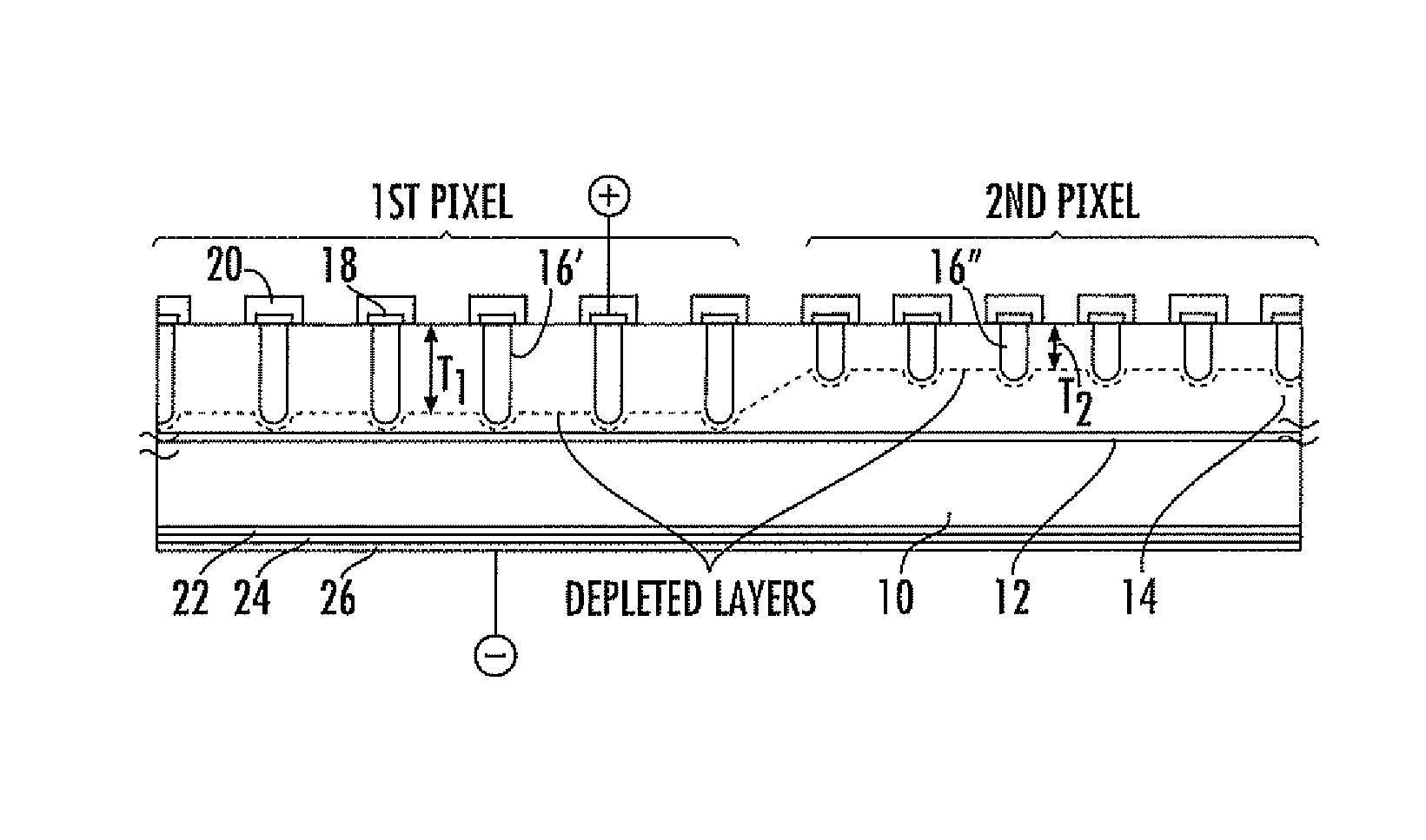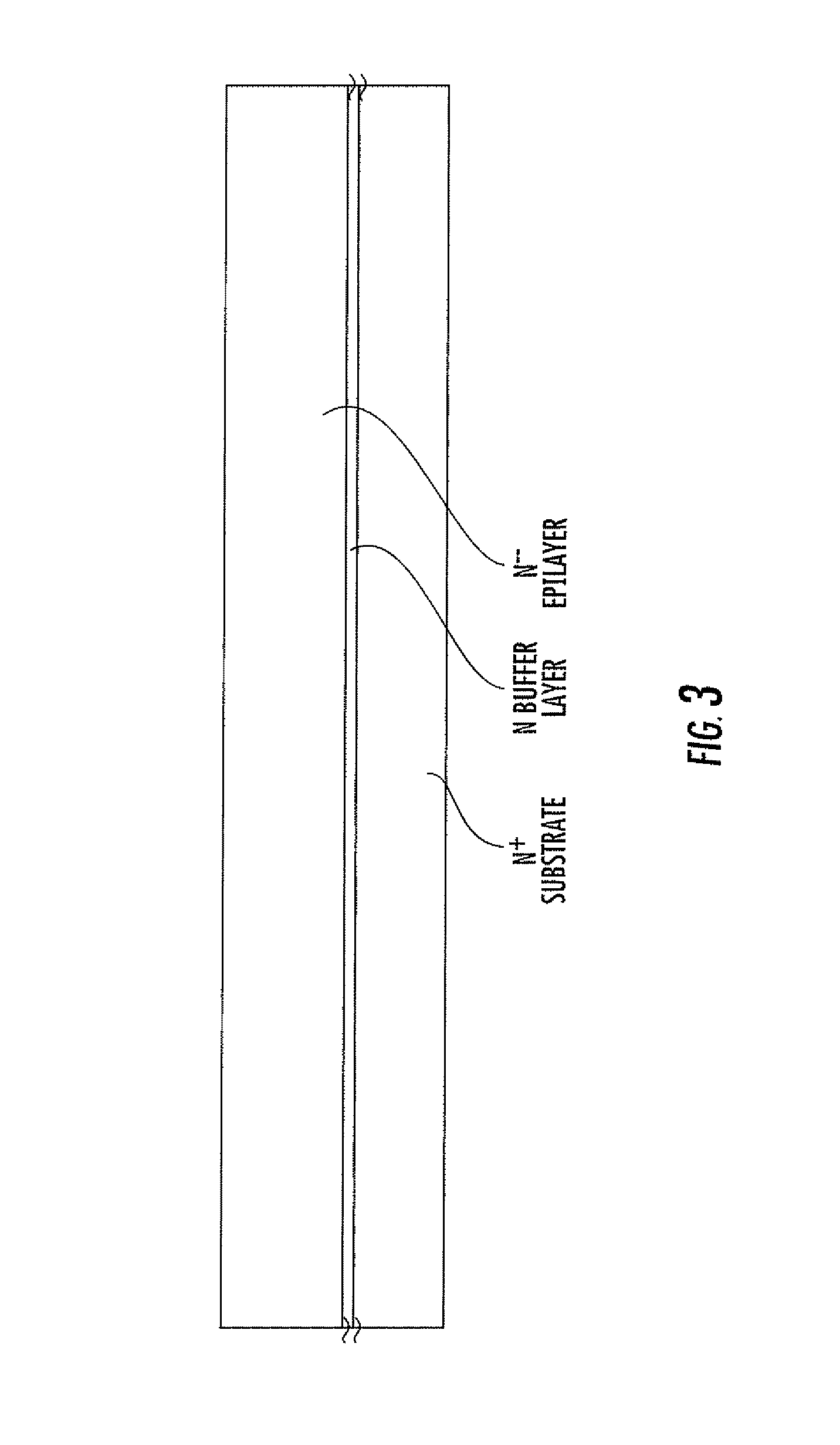Multiplexed output two terminal photodiode array for imaging applications and related fabrication process
a photodiode array and multi-pixel technology, applied in the field of imaging systems, can solve the problems of limiting the dynamic range and/or sensitivity, significantly reducing the area occupancy ratio between the sensing area and the overall chip area (geometrical fill factor), and affecting the integration of the detector with the ancillary electronics.
- Summary
- Abstract
- Description
- Claims
- Application Information
AI Technical Summary
Benefits of technology
Problems solved by technology
Method used
Image
Examples
Embodiment Construction
[0027]The novel architecture of multi-pixel photo detector array of Schottky photodiodes for imaging applications with substantially monochromatic radiations of wavelength comprised in a high wavelength end portion of the sensitivity range of the semiconductor used is schematically depicted in FIG. 1.
[0028]According to the considered exemplary embodiment, FIG. 1 shows a vertical cross-sectional view of two adjacent pixels of the array. Alike are the two pixels, 1ST—PIXEL and 2ND—PIXEL, shown in the descriptive fragment of the cross-sectional view of FIG. 1. The pixel photodiodes are formed in a lightly doped, n−− type layer 14, epitaxially grown over a relatively thin moderately doped, n− type buffer layer 12, on a heavily doped, n+ type mono crystalline substrate 10. The cathode contact-terminal pad of the array is common to all the pixels and may be formed by a commonly, not patterned, metal layer or, more typically, a multilayer metal stack, 22, 24 and 26, deposited over the rear...
PUM
 Login to View More
Login to View More Abstract
Description
Claims
Application Information
 Login to View More
Login to View More - R&D
- Intellectual Property
- Life Sciences
- Materials
- Tech Scout
- Unparalleled Data Quality
- Higher Quality Content
- 60% Fewer Hallucinations
Browse by: Latest US Patents, China's latest patents, Technical Efficacy Thesaurus, Application Domain, Technology Topic, Popular Technical Reports.
© 2025 PatSnap. All rights reserved.Legal|Privacy policy|Modern Slavery Act Transparency Statement|Sitemap|About US| Contact US: help@patsnap.com



